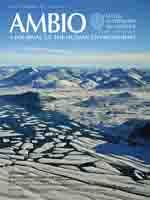Freshwater ice dominates the Arctic terrestrial environment and significantly impacts bio-physical and socio-economic systems. Unlike other major cryospheric components that either blanket large expanses (e.g., snow, permafrost, sea ice) or are concentrated in specific locations, lake and river ice are interwoven into the terrestrial landscape through major flow and storage networks. For instance, the headwaters of large ice-covered rivers extend well beyond the Arctic while many northern lakes owe their genesis to broader cryospheric changes. The effects of freshwater ice on climate mostly occur at the local/regional scale, with the degree of influence dependent on the magnitude, timing, location, and duration of ice cover, and the size of the water body. Freshwater-ice formation, growth, decay, and break-up are influenced by climatic variables that control surface heat fluxes, but these differ markedly between lakes and rivers. Despite the importance of freshwater ice, there has been a recent reduction in observational recordings.
How to translate text using browser tools
1 December 2011
Arctic Freshwater Ice and Its Climatic Role
Terry Prowse,
Knut Alfredsen,
Spyros Beltaos,
Barrie Bonsal,
Claude Duguay,
Atte Korhola,
Jim McNamara,
Warwick F. Vincent,
Valery Vuglinsky,
Gesa A. Weyhenmeyer
ACCESS THE FULL ARTICLE
It is not available for individual sale.
This article is only available to subscribers.
It is not available for individual sale.
It is not available for individual sale.
Arctic
Climate
Cryosphere
Lake ice
River ice





